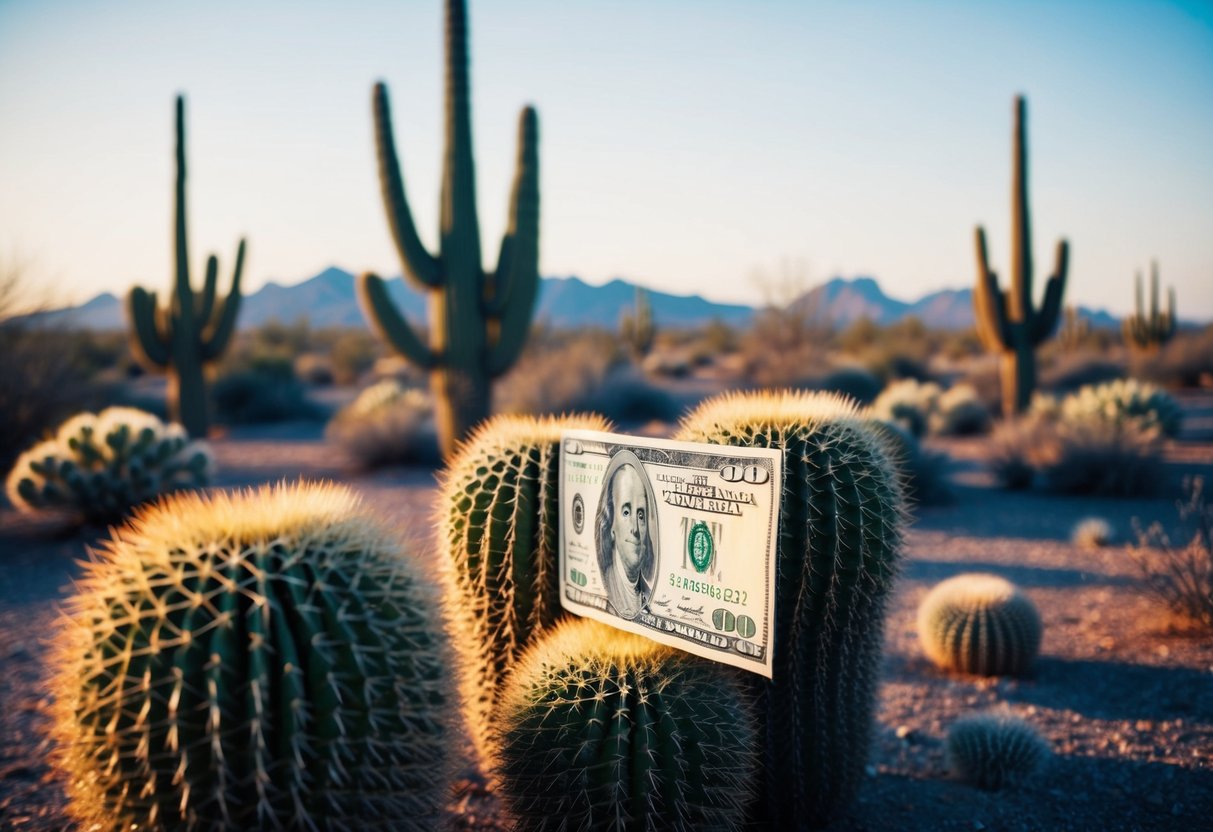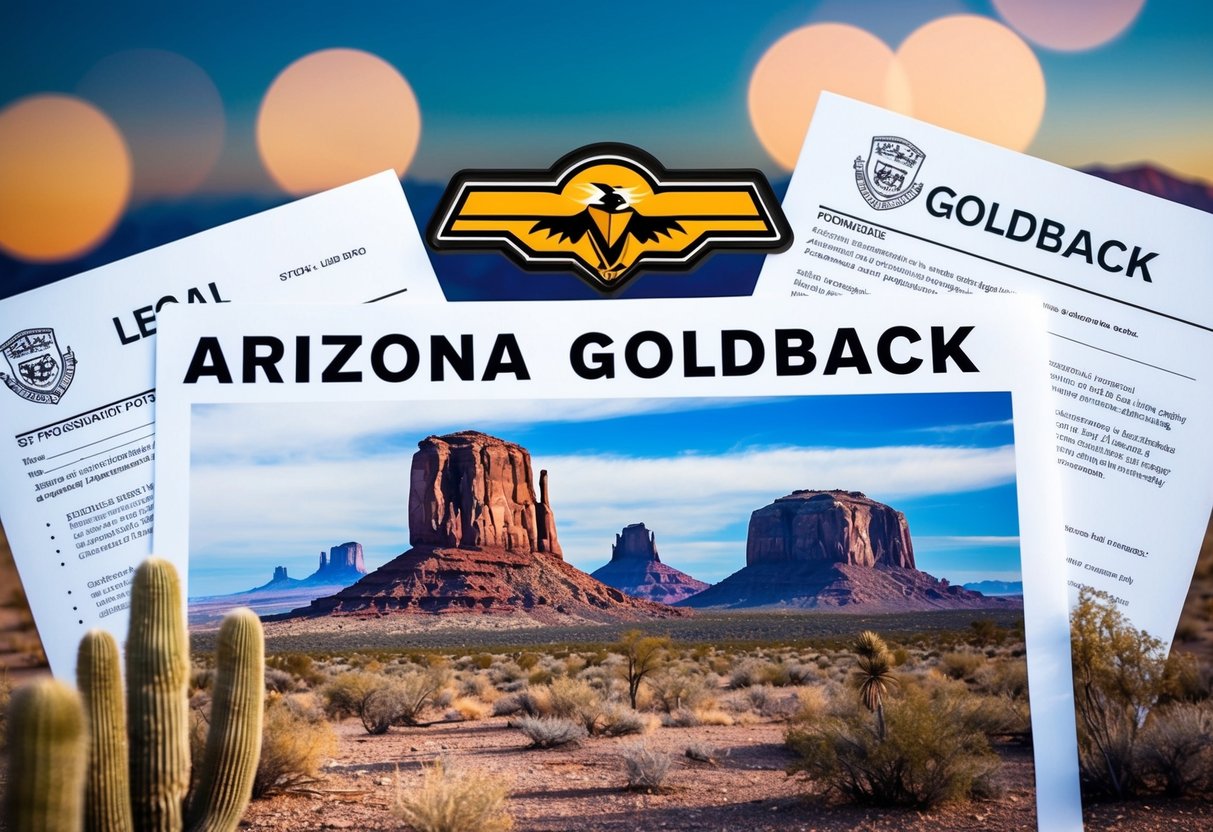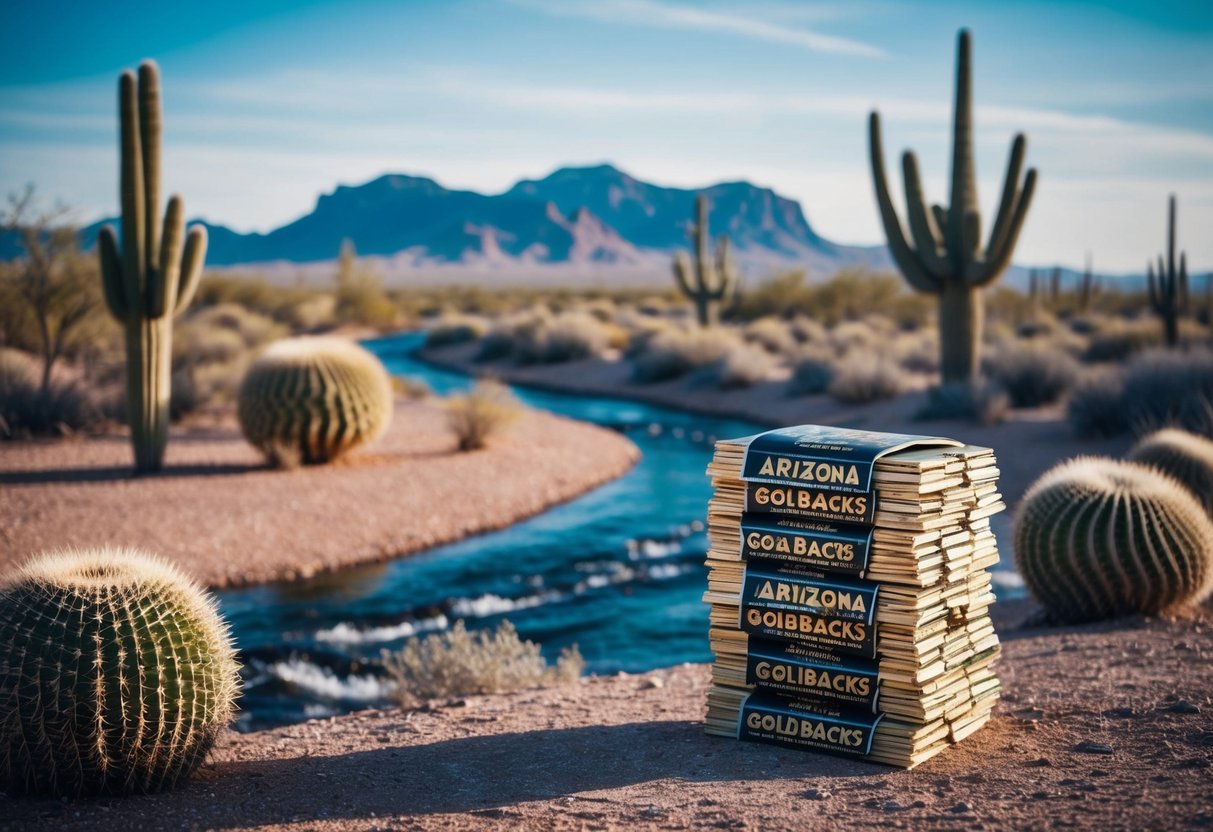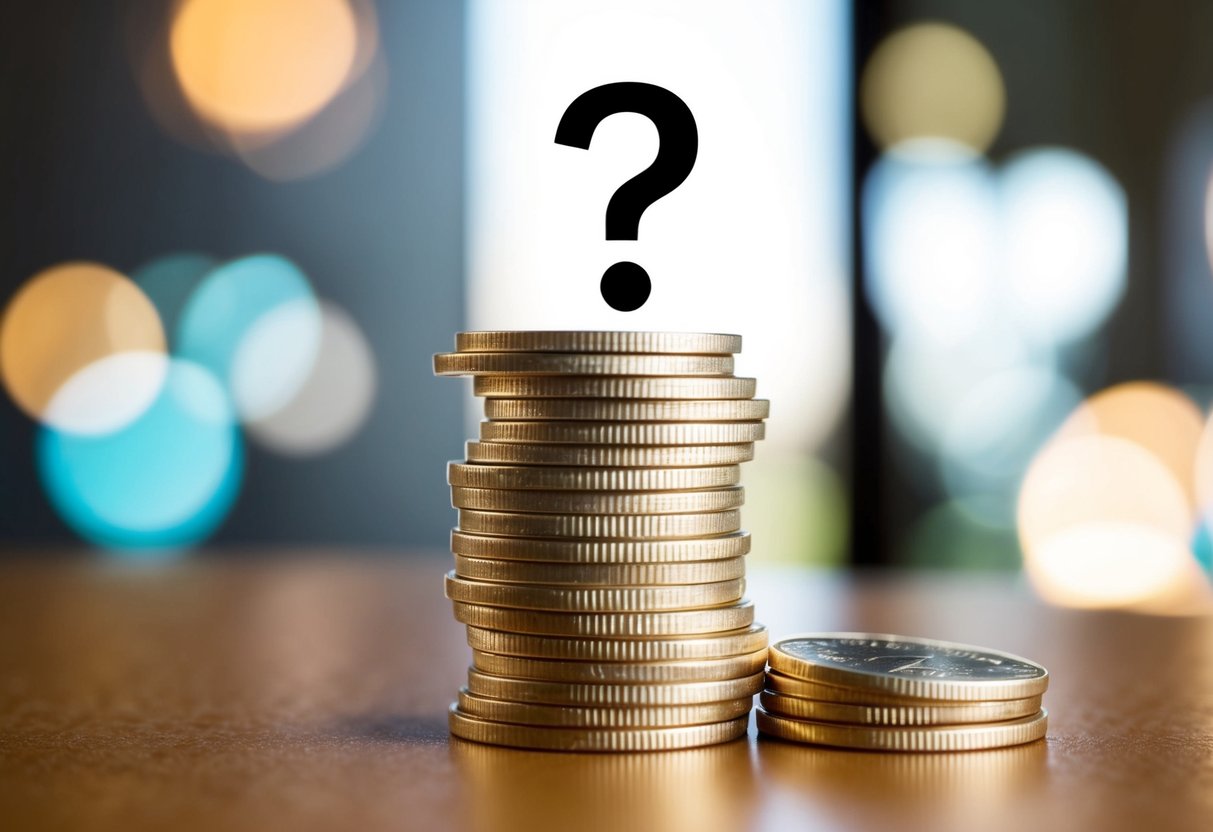Could Arizona be the next state to adopt the Goldback? All signs suggest that Arizona is a strong candidate for the next Goldback series. It ranks 8th in the 2024 Sound Money Index and doesn’t impose a retail tax on gold or silver. These factors make it financially attractive to introduce the Arizona Goldback.
Arizona’s proximity to existing Goldback states adds another layer of feasibility. It borders Nevada and Utah, which already have their own Goldback series. This geographical closeness makes it convenient to extend the Goldback network into Arizona, aligning with current patterns where many Goldback states are adjacent.
Recent legislative actions suggest progress towards this goal. The Arizona Senate Committee has passed a bill to establish a gold-backed currency and a bullion depository. This move could pave the way for Arizona’s own Goldback series, making it a state to watch in the evolution of sound money practices.
Key Takeaways
- Arizona is likely to be the next state for Goldbacks.
- It benefits from its proximity to other Goldback states.
- Legislative steps are progressing in favor of Goldbacks.
Understanding the Goldback

Goldbacks are unique currency notes made with real gold, offering several distinguishing features. They differ from fiat currencies in both composition and financial implications, particularly as a hedge against inflation.
Origins and Concept of Goldbacks
Goldbacks originated from the idea of using gold in everyday transactions. This innovative approach aims to combine modern economic needs with the historic value of gold. The concept relies on embedding small amounts of gold within a tradeable currency note. Goldbacks are designed to reintroduce sound money principles by ensuring every note has intrinsic value. This aligns with the desire for tangible assets in financial systems, especially in times of economic uncertainty.
Design and Material
Each Goldback note contains a precise amount of gold. The design involves a robust polymer layer that securely holds the gold within, preventing wear and tear. Different denominations contain varying amounts of gold, making small transactions more feasible. The intricate artwork on each note not only enhances aesthetics but also denotes the state sponsoring its issuance, such as Nevada and Wyoming.
Comparison with Fiat Currencies
Unlike fiat currencies, Goldbacks are backed by gold, giving them intrinsic value. This is a stark contrast to traditional money, which relies on governmental decrees and trust in centralized financial institutions. With fiat money subject to inflation and depreciation, Goldbacks present a stable alternative. They serve as a reminder of currency systems where precious metals played a key role in financial stability.
Goldbacks as Inflation Hedge
Goldbacks are often viewed as a hedge against inflation due to their precious metal content. As inflation erodes the purchasing power of fiat currencies, the value of gold tends to hold or increase. This quality makes Goldbacks particularly appealing to those looking to preserve wealth. By holding Goldbacks, individuals protect their assets from the diminishing effects of inflationary pressures.
Goldbacks Across States

Goldbacks have gradually spread across various states, driven by local laws and economic interests. Understanding the adoption in Utah and Wyoming, the expansion to other states, and Goldback Inc’s vital role is essential for grasping their growing significance.
Adoption in Utah and Wyoming
Utah was the first state to introduce Goldbacks, setting a precedent for others. This alternative currency, comprising thin layers of gold, gained popularity due to its innovative design and tangible value. Utah’s strong support laid the groundwork for further adoption.
Wyoming soon followed, joining Utah in accepting Goldbacks. This was partly influenced by state regulations favoring alternative currencies. The growing interest in precious metals as a hedge against inflation also played a crucial role. Both states have seen Goldbacks become more integrated into local economies, enhancing their appeal.
Expansion to New States
The expansion of Goldbacks has been strategic, targeting states with supportive economic policies. Arizona and Idaho have emerged as likely candidates for new series because they border existing Goldback states like Utah and Nevada. Arizona ranks highly in the 2024 Sound Money Index, highlighting its potential for Goldback introduction.
South Dakota, Texas, and Oklahoma are also on the radar for future adoption. The demand for alternative currencies and precious metals in these regions is growing. As more states express interest, the network of Goldbacks continues to expand, promising broader acceptance and use.
Goldback Inc’s Role in Dissemination
Goldback Inc is pivotal in spreading Goldbacks across states. They collaborate with local governments to ensure compliance with regulations and promote Goldbacks as a viable currency alternative. This proactive approach has facilitated smoother introductions and higher adoption rates.
The company’s continuous efforts in marketing and expanding production facilities have supported the currency’s growth. Because they maintain high quality and security standards, Goldback Inc ensures the trust of both consumers and businesses. Their effective dissemination strategy is crucial for the ongoing nationwide expansion of Goldbacks.
Regulatory Environment and Legal Tender Status

The legal framework surrounding the use of gold as a currency is complex. Understanding the distinction between legal tender status and federal regulations is key. States like Arizona are exploring options that could change the landscape for alternative currencies like the Goldback series.
Legality and Recognition
Legal tender is a medium of payment recognized by law to settle a public or private debt. While fiat currency is universally accepted as legal tender in the U.S., some states have attempted to add gold and silver to this category. Arizona passed legislation allowing gold and silver to be used as legal tender alongside the dollar. Bills like Arizona’s aim to provide residents more financial options and protect against currency devaluation.
Recognition of alternative currency also depends on how it’s viewed by financial institutions and businesses. Though being legalized as a form of payment, widespread adoption requires familiarity and trust. Considerations will include tax implications, as Arizona, for instance, does not impose a retail tax on gold or silver transactions.
Impact of Legal Tender Status on Usage
The legal tender status of currencies significantly impacts their usage and acceptance in everyday transactions. In states recognizing goldbacks, users can choose them to make payments, though acceptance by businesses and individuals largely depends on their personal preferences. The use of gold as money is not just a legal shift but also affects perceptions among consumers and merchants.
A recognized legal tender status can broaden the appeal of the goldback series, encouraging usage beyond a niche market. States focusing on sound money principles may see increased public interest. However, transitioning from traditional fiat currency requires thorough education and the development of infrastructure that supports alternative currencies.
Economic Implications of Goldbacks

Goldbacks, made from precious metals, offer a unique means of conducting transactions that can influence local economies, investment strategies, and inflation levels. Their impact extends beyond simple currency replacement, potentially altering financial and economic landscapes in nuanced ways.
Impact on Local Economies
Goldbacks have the advantage of not relying on fiat currencies. In areas like Arizona, they could stimulate local economies by promoting trade with a tangible asset. Merchants accepting Goldbacks might attract customers interested in alternative currencies, potentially boosting sales and local business expansion. Additionally, as noted here, no retail tax on Goldbacks in Arizona may encourage more widespread adoption.
Having Goldbacks in circulation can also increase financial literacy as people gain understanding of tangible assets. This currency may foster a sense of community within regions that adopt it, by reinforcing a trust-based exchange system. However, changes in gold prices and limited acceptance can challenge widespread circulation.
Goldbacks vs Traditional Investments
Compared to traditional investments like stocks or bonds, Goldbacks offer a physical asset that may appeal to investors seeking a hedge against inflation. Stocks and bonds depend heavily on market conditions, while Goldbacks derive their value from gold prices. This intrinsic value may make them a more stable option during economic fluctuations.
While traditional investments can offer dividends or interest, Goldbacks provide no such returns. Therefore, individuals looking to preserve wealth might use Goldbacks as a long-term safeguard, rather than for short-term gains. The tangible nature of Goldbacks can complement other investments by diversifying an investor’s portfolio.
Potential Effects on Inflation
Goldbacks may influence inflation by offering an alternative to fiat money. When gold prices stabilize, Goldbacks can serve as a consistent store of value, potentially reducing inflation risks for users. They may protect purchasing power against currency devaluation, acting as an inflation hedge.
However, widespread adoption could cause variability in demand, impacting gold prices and the reliability of Goldbacks as a stable currency. Balancing Goldback and fiat currency circulation is crucial to managing any unintended inflationary pressures. Understanding these dynamics can help stakeholders mitigate risks associated with introducing Goldbacks into an economy.
Consumer Interaction with Goldbacks

Goldbacks are gaining attention as a form of currency that combines everyday use with the intrinsic value of precious metals. This section will explore their market acceptance, how they enhance shopping experiences, and the role of education in their adoption.
Market Acceptance and Adoption
Goldbacks are designed to be used like cash, making them accessible for everyday transactions. They are especially appealing in states with favorable sound-money laws, like those that do not impose a retail tax on gold or silver. This acceptance helps to integrate Goldbacks into local economies and encourages more merchants to accept them.
The adoption of Goldbacks has been notable in certain states, where they have become part of the local currency landscape. As more businesses accept Goldbacks, consumer trust grows, supporting wider use and acceptance. This growth can be attributed to their unique properties, allowing consumers to use them confidently like traditional currency while benefiting from the security of precious metals.
Improving the Shopping Experience
Using Goldbacks adds a unique dimension to the shopping experience. Consumers appreciate handling tangible currency that holds value independent of government-backed money. This offers an alternative that can be particularly appealing during times of inflation or economic uncertainty, as Goldbacks retain value.
Merchants benefit from accepting Goldbacks by attracting customers interested in alternative currencies. Offering diverse payment methods, including Goldbacks, can differentiate a business and draw in those who prefer using precious metals. This alternative enhances the shopping experience, fostering a sense of community among users who value such options.
Role of Education in Adoption
Education plays a critical role in the adoption of Goldbacks. Consumers need to understand how Goldbacks work, including their value and how to use them safely. Proper education empowers consumers to make informed decisions when choosing to use Goldbacks.
Workshops and informational sessions contribute to spreading knowledge about Goldbacks. Providing clear and straightforward explanations helps people see the benefits and potential of using them in their day-to-day lives. As more people learn, the use of Goldbacks as an alternative form of currency can expand, encouraging broader acceptance and integration into various consumer markets.
Frequently Asked Questions

Many are curious about the Goldback currency, its adoption in different states, and its use in everyday transactions. These frequently asked questions provide clarity.
Which states have adopted the Goldback currency?
Goldbacks have been embraced by several states known for friendly sound-money laws. States like Utah and Nevada have their own Goldback series and more states may be added in the future. Each state may have unique designs that reflect their cultural heritage.
Are Goldbacks gaining popularity in the United States?
Goldbacks are becoming more popular as a form of alternative currency. With efforts to introduce them in every state, expansion plans suggest growing interest and acceptance. The appreciation in their value from $2.00 in 2019 to an average of $3.75 by the end of 2021 reflects their increasing demand.
Where can one legally use Goldbacks for transactions?
Goldbacks can be used in places where they are accepted as a legal form of currency. This often depends on state regulations regarding the use of alternative currencies. In states that have officially adopted Goldbacks, they are more likely to be accepted in local businesses for transactions.
What is the current value of a Goldback?
The value of a Goldback can vary based on the market demand and the price of gold. As of the end of 2021, the average value was reported to be $3.75 per Goldback. This represents an increase from the initial value when they were first introduced in 2019.
How many variations of Goldbacks exist?
There are multiple variations of Goldbacks, with each state having its own series and designs. These variations highlight unique state symbols and art, making them not just a currency but also a collector’s item. The expansion to new states suggests more variations will likely become available.








